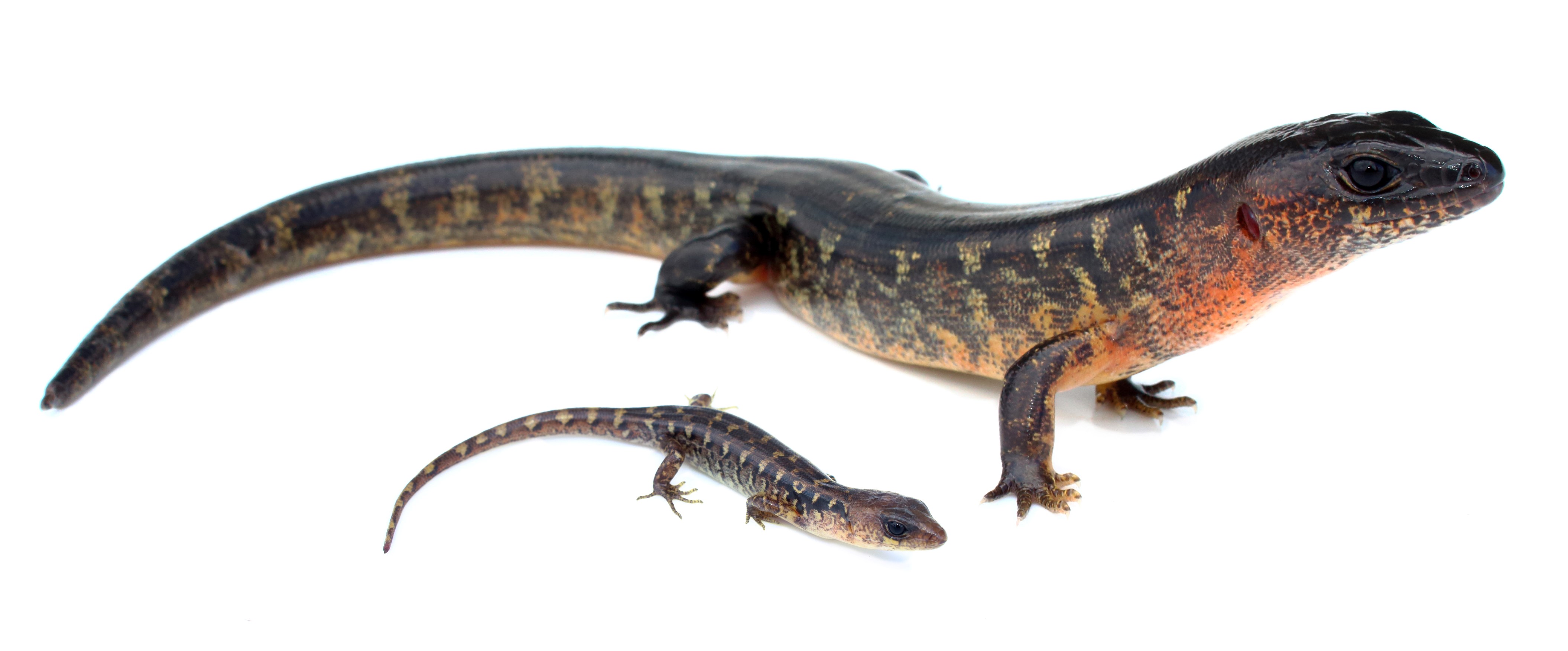Robust skink breeding programme
Robust skinks (Oligosoma alani) are New Zealand's largest species of native skink, reaching over 30cm in length, and are now one of our rarest lizards. The species was once common in lowland areas throughout the North Island, but due to the introduction of mammalian predators, the species is now only persists on a handful of small offshore islands. Like all other native lizards, they are endemic - meaning they are unique to NZ and found no-where else.
Unusually for a skink, robust skinks are nocturnal. They naturally occur in forested areas, where they will usually hide under rocks or logs, in deep leaf litter, or in seabird burrows during the day. At night, they emerge to forage for prey which include a wide variety of invertebrates, and the berries from native trees and shrubs such as Coprosma and Kawakawa.
Due to their large size, nocturnal habits, terrestrial lifestyle, and slow life-history (usually taking 5-8 years to reach maturity, and females generally breeding only once every two years), they cannot survive in the presence of any introduced mammalian predators. In fact, robust skinks would have been among the first species to disappear from the mainland following the arrival of humans in New Zealand, and only survived on six small islands that fortunately have never had introduced mammals.
In order to safeguard the species for future generations, new populations should be established on other islands and in pest free areas where they will be safe from predators.
This sounds simple enough. However, the islands that robust skinks occur on are small, and as a consequence the populations on these islands are restricted both in number and genetic diversity. These skinks are in high demand for conservation and restoration projects, but we cannot collect large numbers of animals from existing populations to start new ones, as this could threaten their survival on these islands by critically reducing their numbers or genetic diversity. Because of this, a captive breeding program (providing sufficient numbers of animals for release into new areas) would be immensely valuable to assist robust skink conservation.
The New Zealand Herpetological Society (NZHS) members and Zoos hold a number of robust skinks in captivity. These animals have been bred for several generations from robust skinks that were collected from the wild many decades ago. A captive management plan has been drafted to guide a breed-for-release programme, providing these animals are suitable.
Across their natural range, robust skinks are genetically distinct between island populations, and were collected from several different islands to start captive colonies. So, the first step for a captive programme is understanding what island/s the current captive individuals originated from, and assessing their genetic diversity (as they may have originated from a small number of founders). This work will indicate how suitable the existing captive stock could be for founding new self-sustaining populations in the wild.
The NZHS will work with Iwi partners to determine the suitability of current captive stock, and how they should be managed.
Key Messages:
- The NZHS are seeking an equal financial contribution from donors to enable the project to progress.
- The NZHS wants to support robust skink conservation through establishing new populations in safe sites.
- The NZHS will lead the captive programme by contributing skills, husbandry and facilities.
- The NZHS will work in partnership with Iwi, DOC, and island managers to establish new, secure populations in the wild.
- The NZHS received a grant from the Lotteries Environment and Heritage fund to have the existing captive robust skinks DNA tested to understand their geographic origin and genetic diversity.
- At this stage, genetic samples have been taken from the captive population, and we are awaiting final results on their origin and diversity. These results will inform us on the suitability of the captive population for reintroductions.
- We intend to seek additional funding in future to support later stages in the project such as: collection of additional founders if required, disease screening, additional enclosures to increase capacity, and eventual releases.

Photo: Nick Harker
